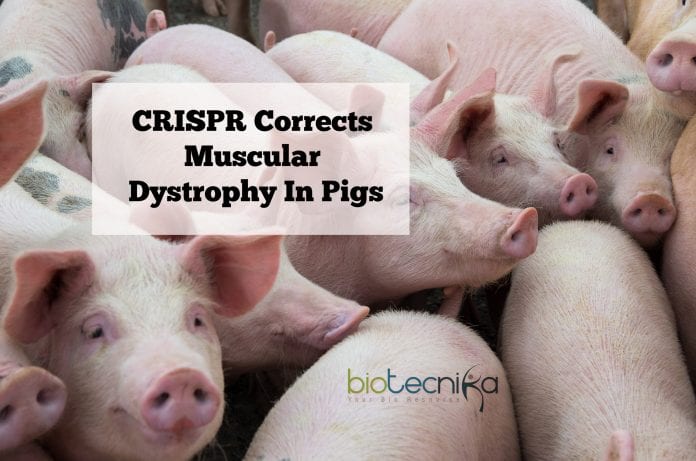CRISPR To Treat Muscular Dystrophy – Cure Muscular Dystrophy in Pigs
Duchenne muscular dystrophy (DMD), one of the most devastating and common muscular diseases, reduces the life expectancy and quality of patient’s life extensively. But German researchers have now managed to treat muscular dystrophy in pigs using the CRISPR-gene editing tool. This has brought the treatment closer to human trials.
A genetic mutation that removes the gene producing dystrophin, a protein necessary for muscles to regenerate themselves, causes DMD. By the age of 5, children with this mutation begin to show symptoms of muscle weakness, and they lose the ability to walk by 12. As their heart muscles weaken, they rarely live through their 30s.
DMD has been a prime target for treatment using CRISPR, the simple but powerful tool for removing problematic genes and replacing them with more beneficial ones. Researchers are also working on CRISPR to treat blindness, HIV, and cancer.
The new CRISPR experiments on pigs to correct the faulty dystrophin gene allowed them to produce dystrophin once again. They were functional and stable, though they were shorter than usual. The pigs showed improved muscle function, life expectancy, and less chance of developing an irregular heartbeat.
One
of the major issues with CRISPR gene editing, transience does not affect this treatment. Most of the CRISPR treatments become ineffective once the gene-edited cells die off at some point and are replaced by others of the same type. As the muscle and heart cells are long-lived cells, CRISPR gene editing effects will remain in the body for a much longer time. Half of the myocardial cells remain functional throughout the life of a human being. So if the genes in myocardial cells are corrected, the correction would be a long term success.Although there had been experiments before to correct muscular dystrophy using CRISPR in mice (2014) and dogs (2017), this is the first time it been tested in pigs. Pigs are more closely related to humans; hence the new model is a significant step towards human trials.






























